Application of PP Modified Materials

Posted on : Jan 3 , 2023 By GREFEE
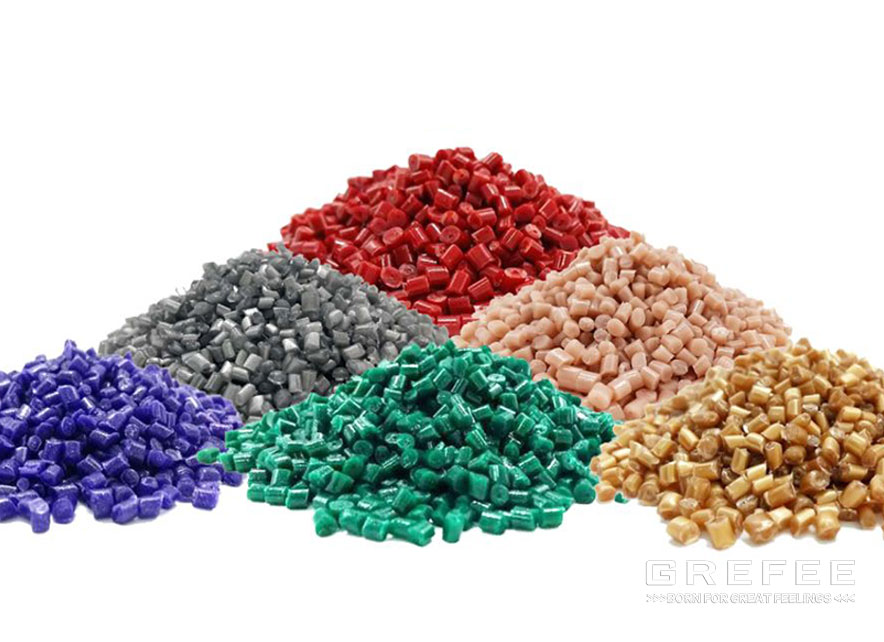
Polypropylene,simply known as PP, is a kind of material with notable advantages and disadvantages. Although PP and ABS both are commonly used materials so far, the performance of PP is not as balance as that of ABS. Thus, for some common applications of shell of products, the pure PP is obviously not as good as ABS.
Advantages of PP
1.Advantages: 1. Low density, which is the existing resin plastic that has the lowest density, so its advantages are evident in the application of light weight products.
2. Non-toxic, classified as food grade materials, can be used in the field of food storage and packaging.
3. Great chemical stability, which is resist to acid, alkali, salt solution and various organic solvents.
4. Great thermal resistance, can be constantly used under 100℃.
6. Great rigidity and is resist to impact and has great folding resistance, is commonly applied to the integrated plastic hinge products.
7. Low price, so is cost effective with volume production.
Disadvantages:
1. Large shrinkage rate, poor dimension stability, so is not suitable for using into the products with accuracy requirements.
2. Low strength and modulus, so is hard to be applied into the situations with strength requirement.
3. Low temperature impact strength is poor, easy to become brittle in low temperature environment.
4. Poor weather resistance, easy aging, poor UV resistance, prone to etiolation, so it is not suitable for long-term application in outdoor environment.
There is not any material that has great performance on each aspect. These kinds of materials are usually higher, like PC. In addition to advantages, like poor flowability, notch sensitivity and easy hydrolysis at high temperature, other performances are outstanding, so the price is indeed higher. Of course, the price is not the only why to evaluate whether the material is good or not. There are also other factors affecting the price. Thus, It is particularly important to select appropriate materials in different scenarios.
Sometimes, when selecting materials, we may come across this. There is a material we know is very suitable for using into our products, but we just cannot accept one of its disadvantages. Is there any solution for it? Of course, we can solve it by modifying the plastic.
In this article, by modifying the PP plastic, it can demonstrate that modifying is the best way to maximize the application of materials.
Indeed, modification is to improve its advantages or increase its original performances on the basis of maintaining the original superior performance.
1) Adding minerals to strengthen and toughen
2) Glass fiber reinforced
3) Weathering modification
4) Flame retardant modification
Before modifying, the purpose or effect to be achieved by the modification shall be clarified, and then the appropriate modified materials can be selected.
| purpose of modification | Modified materials | ||
| Improve hardness, heat resistance and dimensional stability | Calcium carbonate, antiskid stone powder and other minerals. | ||
| Improve tensile strength, impact resistance at low temperature and creep resistance | Glass fiber, asbestos fiber, mica, glass bead. | ||
| Improve impact performance | Rubber, elastomers, and other flexible polymers. | ||
| Improve transparency | Sorbitol, carbonate and rosin nucleating agents, metallocene catalyst polymerization, PA6 and PP blend. | ||
| Weather resistance, anti-static, flame retardant, conductivity, electroplating, nucleation, copper resistance | All sorts of special agents. |
Mineral filled modified PP
| Mineral filler type | Modification effect | ||
| Calcium carbonate (heavy calcium, light calcium) | Incrementally reduce cost, improve impact resistance and improve printability. | ||
| Talc powder (flake) | Incrementally reduce cost, improve rigidity and heat resistance, and improve dimensional stability. | ||
| Mica powder (flake) | Significantly improve rigidity and heat resistance, improve dimensional stability and high temperature creep resistance. | ||
| Calcined kaolin | Improve electrical insulation | ||
| Wollastonite (acicular) | It has a certain strengthening effect and improves the surface hardness. | ||
| Precipitated barium sulfate (barite powder) | Improve the surface luster of products and increase the density of materials. |
Application of Mineral Filled PP
The filing and modification of mineral is the mostly used way for the PP modification, among which the talcum powder filling modification. As we all know, the price of talcum powder is 10%~20% of plastic, so involving the talcum powder into the plastic can not only improve the pereormcane, but also lower the cost and increase the profits.
In the field of household appliances, such as the following steamer that is made of PP+T20, where T20 means 20% talc is filled, for improving the rigidity and heat resistance of the steamer on the basis of performance.
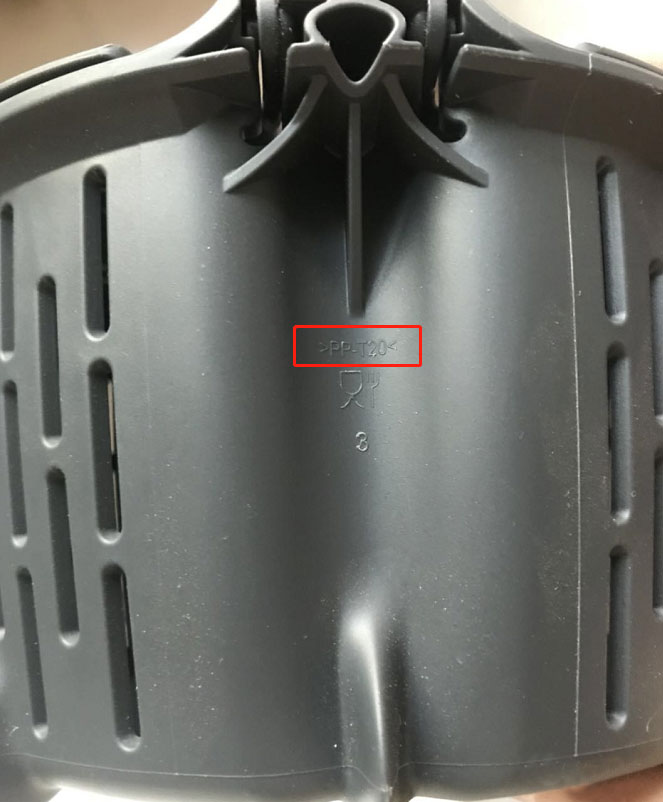
Shell material of electric cooker: mineral modified PP is used to replace ABS.
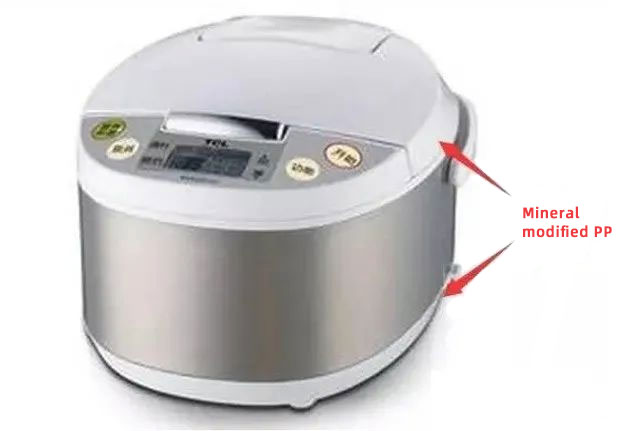
After the mineral filling, the main effect is:
1. For the shell: achieve high gloss and low shrinkage.
2. For the base: achieve high heat resistance.
In the automotive field, like the car bumper, mainly using the PP+EPDM+talcum powder(T20). The main effect is:
1. Good impact resistance, great elasticity during collision to provide protection for passengers.
2. Good weather resistance, prevent the deformation under high temperature and aging.
3. Good paint adhesion capacity: ensure that the paint cannot fall off and discolor.
4. Good machining performance.
5. Low price.
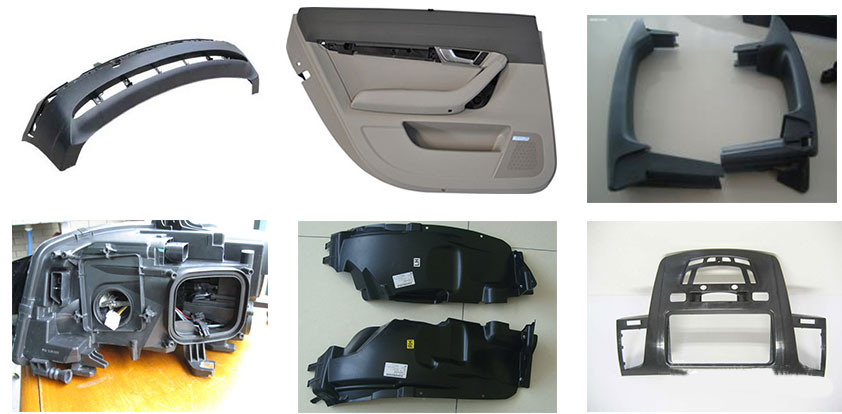
On other interior and exterior parts, most of them are also filled with PP+minerals.
| Wheel cowling | PP+EPDM | high rigidity |
| Wheelchair trim | PA6+mineral powder | Heat resistant and paintable |
| Radiator grille | PP ABS PC/PBT | paintable |
| License plate | ABS PC/ABS | Electroplating |
| Side skirt | Pp + 30% mineral powder | paintable,low shrinkage and coefficient of linear expansion |
| threshold | Pp + 30% mineral powder | low shrinkage and coefficient of linear expansion |
| Anti-collision strip | Pp + 30% mineral powder | Warpage prevention, low coefficient of linear expansion |
Glass fiber reinforced PP
Due to the performance deficiency of PP, so it is not suitable using into the engineering structure. Engineering structural members can be made after glass fiber reinforcement. After the reinforcement of glass fiber, the mechanical strength of PP is enhanced, as well as the heat resistance, steam resistance, chemical corrosion resistance, creep resistance. The shrinkage rate decreased significantly.
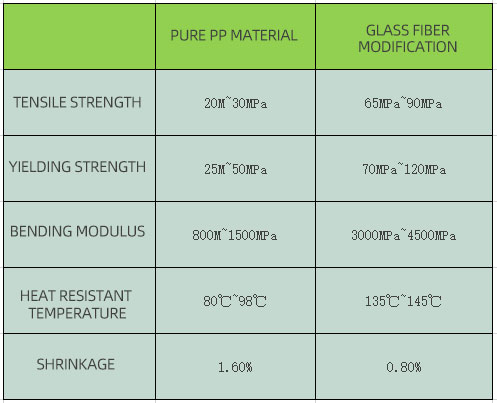
Note:
1. Content of glass fiber is less than 40%.
2. Modification effect achieved when length of glass fiber is more than 0.2mm.
3. When the diameter of glass fiber is more than ten microns, the effect is better.
4. When the glass fiber content increases, the processing fluidity of reinforced PP decreased accordingly.
5. The appearance of products may have floating fiber.
Application of glass fiber reinforced modified PP:
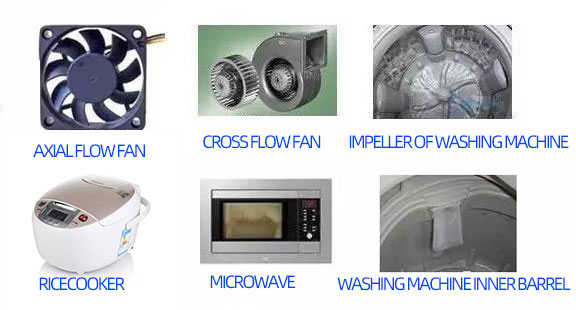
weather resistance PP
Due to the unstable tertiary carbon group in the PP, and the tertiary carbon atom is sensitive to the ultraviolet rays, so oxidation is quite likely to occur and further leading to the poor oxidation resistance and radiation resistance of polypropylene. After the light, heat and oxygen, it is easy to cause discoloration and strength decline due to aging degradation, which limits its application in outdoor products.
As the PP is being widely applied into the outdoor materials, like plastic seats, outdoor decoration materials, auto parts, outdoor unit shell of air conditioner of large outdoor stadium, a new problem comes out that is urgently to be addressed, which is the unstable PP is affected by light and heat in the natural environment, so it is quite likely to be broken by automatic photo oxidation degradation and cannot be used. Thus, usually PP is used with additives, including zinc oxide, lauryl thiopropionate, carbon black or opal filler to improve the weather resistance of PP. application of PP:
The shell of the outdoor unit of air conditioner should be able to tolerate different climatic conditions such as sunshine, rain and cold, and also, the requirements of long-term use. The weather resistant PP material can replace the traditional metal spraying shell. In addition to the unit shell in the air conditioner room, weather resistant PP is also the material used to produce the axial flow fan blade and the warm air outlet of the outdoor unit of the air conditioner.
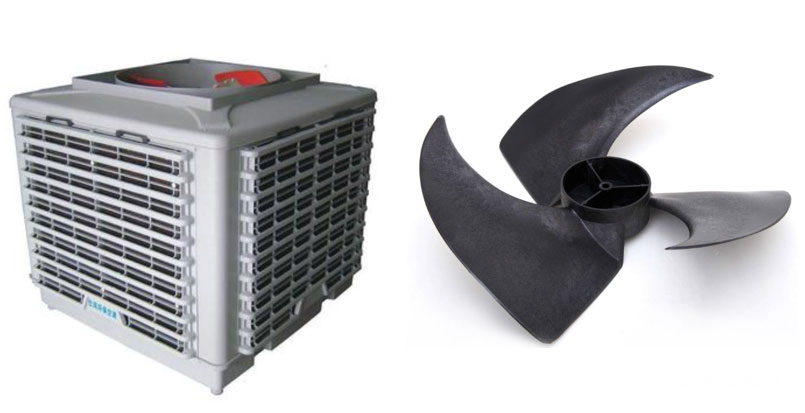
Flame retardant PP
The flame retardant PP is a kind of modified PP plastic with flame retardant performance. High crystallinity and flammability of PP is difficult to make it meet up the high flame retardant level required by electrical and other industries, and its cost is much higher. Thus, Br/Sb composite flame retardant is often chose for the flame retardant modification in the market. Through flame retardant, PP products can achieve UL94V-0, and can withstand 650 ℃ or even 750 ℃ hot wire without ignition. The modified material is made of PP raw material+flame retardant, color masterbatch, etc. by single screw plasticization.
Brominated flame retardants is harmful to our health as it releases the toxic gas and smoke when it retard polymer. So, the biggest problem of brominated flame retardants is the environmental protection. Now, people are seeking a substitute of halobromine flame retardant to achieve zero halogen.
PP environment-friendly halogen-free flame retardant
PP flame retardant is a special environment-friendly flame retardant for PP, which belongs to nitrogen phosphorus flame retardant. The halogen free intumescent flame retardant is specially developed for polypropylene, which is polymerized by synergistic phosphorus and nitrogen containing chemicals. It has great compatibility in the polypropylene, and low impact to the mechanical performance of plastic. At the same time, it has great process stability during the processing.
The environment-friendly flame retardant for PP is different from the halogen containing flame retardant. It can produce dense and expanded carbon layer to achieve thermal insulation and air insulation to prevent the flame during combustion without producing stimulating hydrogen halide gas and black smoke generation. Thus, It is an environment-friendly flame retardant.
Application of flame retardant
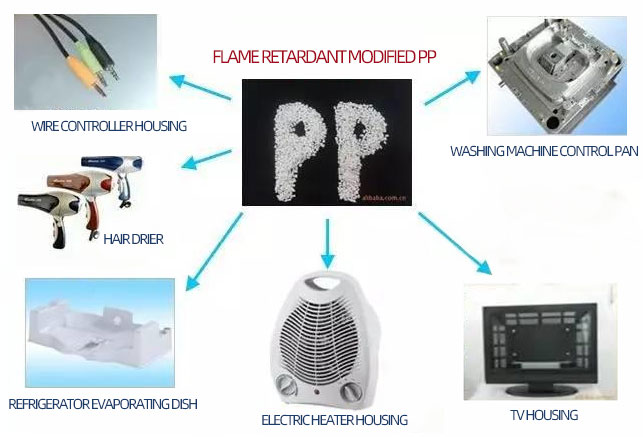
It is common that plastics have some characteristics and defects. The modified plastic is to overcome the shortages of plastics to widen the application range.
MORE BOLG
Insert mold in injection mold service
What are advantages and disadvantages of Zinc alloy and Aluminum alloy?
Inspection standards for injection molded partappearance
How to judge the quality of your plastic products?
Inspection standards for CNC machining
To ensure that your products are 100% qualified
Categories

Try GREFEE now,for free
We keep your uploaded files confidential and secure.



